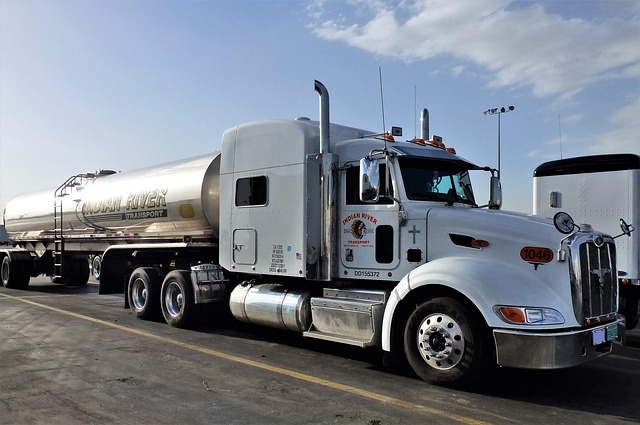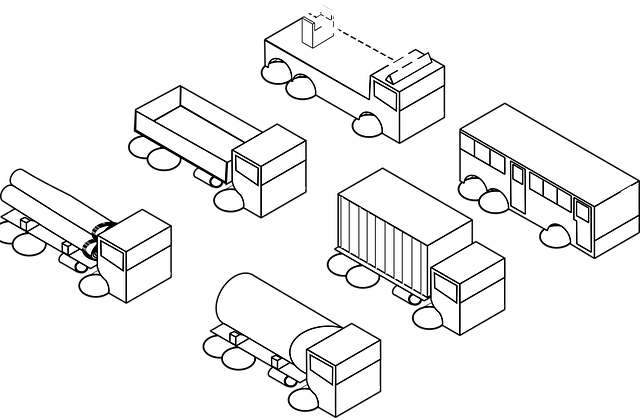Understanding heavy haul permit requirements involves weight limits, dimensions, and route planning. Selecting Select Heavy Duty Trucks with powerful engines, advanced safety features, and robust components is crucial for efficient and safe operations. The application process demands meticulous preparation, including vehicle registration, insurance, and route plans. Adhering to regulations and using modern technologies ensures secure transportation of oversized loads.
Heavy haul permits are essential for transporting oversized or heavy loads, ensuring safe navigation through strict regulations. This guide offers a comprehensive overview of the permit requirements for select heavy-duty trucks, covering fundamental basics, vehicle specifications, application processes, and safety standards. By understanding these key aspects, operators can navigate the complex landscape, facilitating efficient transportation while adhering to stringent compliance rules.
- Understanding Heavy Haul Permit Basics
- Vehicle Eligibility and Specifications
- Application Process and Required Documents
- Safety Regulations and Compliance Standards
Understanding Heavy Haul Permit Basics

Understanding Heavy Haul Permit Basics
Heavy haul permits are crucial for individuals or businesses looking to transport oversized or exceptionally heavy loads. These permits ensure safe and legal movement by setting specific guidelines, including weight limits, dimensions, and route restrictions. When considering heavy-duty trucks for such tasks, it’s essential to select vehicles with the appropriate towing capacity to handle these demanding operations. Advanced safety features in trucks, like collision avoidance systems and improved braking technologies, play a pivotal role in mitigating risks associated with heavy load towing.
Autonomous driving commercial trucks are also emerging as a game-changer in the industry, promising enhanced efficiency and reduced human error. In terms of navigating these regulations, understanding the local requirements and seeking professional guidance is vital. Remember that proper preparation and adherence to guidelines ensure smooth operations, preventing potential delays or fines associated with non-compliance.
Vehicle Eligibility and Specifications

When it comes to navigating heavy haul permit requirements, the first consideration is often the vehicle itself. Select Heavy Duty Trucks designed for such tasks must meet stringent criteria in terms of specifications. These include robust engines capable of handling significant loads, advanced safety features for operator protection, and durable components to withstand the demands of heavy haulage. Additionally, these trucks are typically equipped with enhanced braking systems and powerful axles to ensure stability and control during transport.
Reputable heavy duty truck dealers offer a range of options beyond traditional gas or diesel models. Fuel-efficient big rig alternatives, such as electric or hybrid vehicles, are gaining popularity due to their environmental benefits and potential cost savings over time. Moreover, there are affordable heavy haulage options available from both new and used markets, catering to various budgets without compromising on performance or reliability.
Application Process and Required Documents

The application process for a heavy haul permit is straightforward but requires careful preparation and documentation. Interested parties must first select the appropriate heavy-duty trucks designed for long distance hauling or specific cargo types, such as fuel-efficient big rig alternatives or highway-ready heavy duty vehicles. This initial step ensures that the vehicle meets the necessary specifications and can handle the demands of the intended operation.
After choosing the right equipment, applicants must gather essential documents. These typically include vehicle registration, proof of insurance, driver’s licenses, and any previous permits. Additionally, a detailed route plan outlining the journey’s length, locations, and potential hazards is crucial for regulatory bodies to assess safety measures. Ensuring these requirements are met allows for a smooth permit application process, enabling operators to hit the road with their high-capacity long distance hauling semi rigs.
Safety Regulations and Compliance Standards

When operating heavy haul permits, adhering to stringent safety regulations and compliance standards is paramount. These rules are designed to protect both drivers and the public during transportation of oversized or unusual loads. Select Heavy Duty Trucks must meet specific criteria for weight, dimensions, and equipment to ensure safe navigation on public roads. Compliance involves rigorous inspections, proper licensing, and adherence to speed limits and route planning.
Effective load planning tools for haulers play a crucial role in navigating these regulations. Utilizing off-road capable heavy haulers equipped with smart logistics truck solutions allows for precise handling of loads. These advanced systems account for factors like terrain, weather conditions, and vehicle limitations, enhancing safety and efficiency. By prioritizing compliance and employing innovative technologies, haulers can confidently navigate the complexities of transporting oversized cargo while maintaining public safety.
When navigating the heavy haul permit requirements, understanding the basics, vehicle eligibility, application process, and safety regulations is key. By ensuring compliance with these essential standards, select heavy duty trucks can efficiently traverse various landscapes, contributing to a streamlined transportation network. Remember that adhering to these guidelines fosters a testament to safe and responsible trucking practices in today’s digital era.
